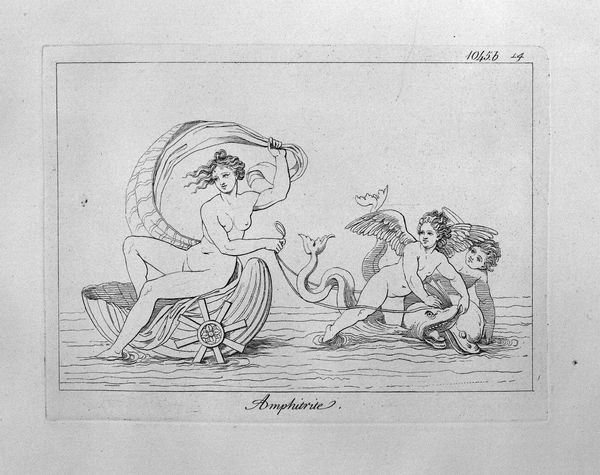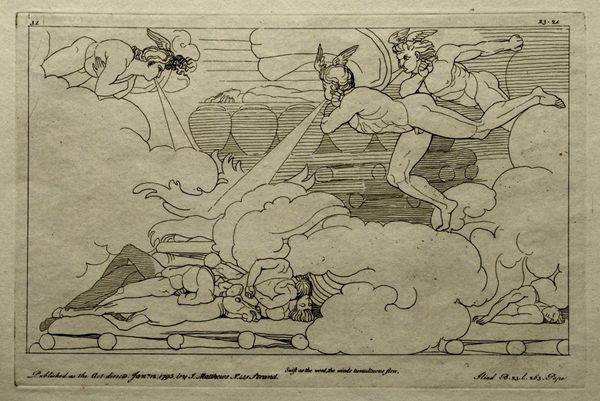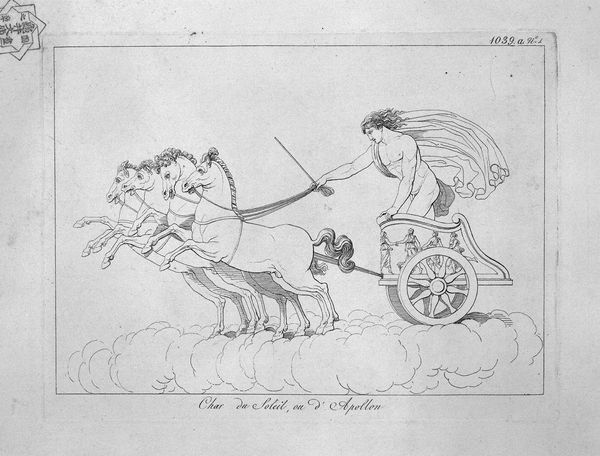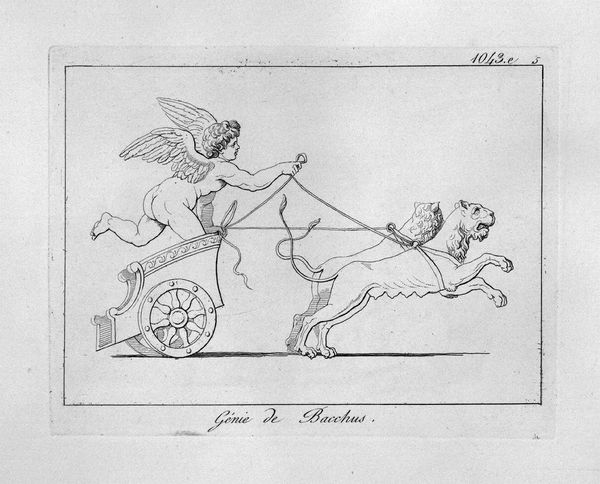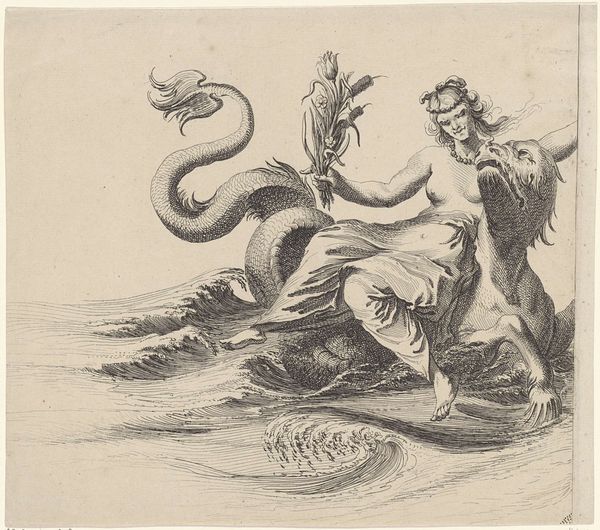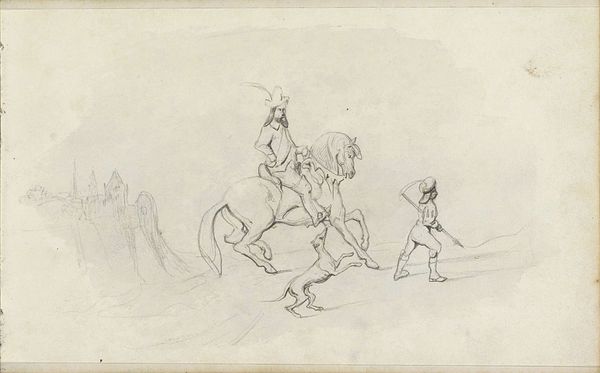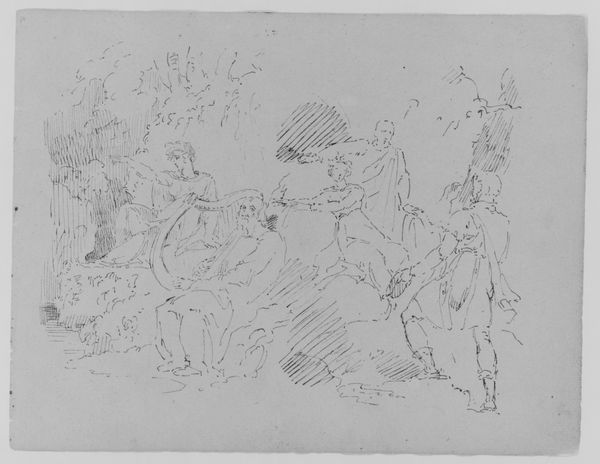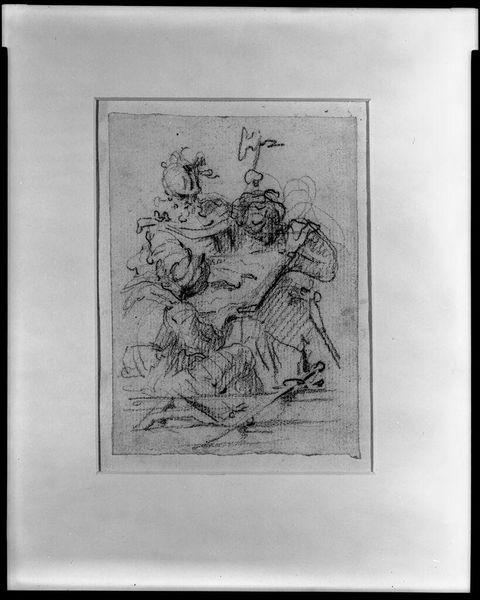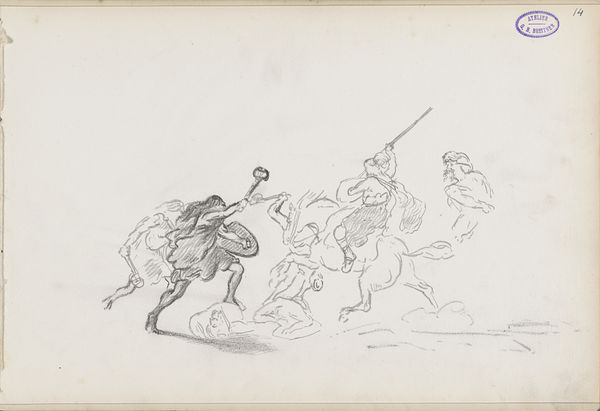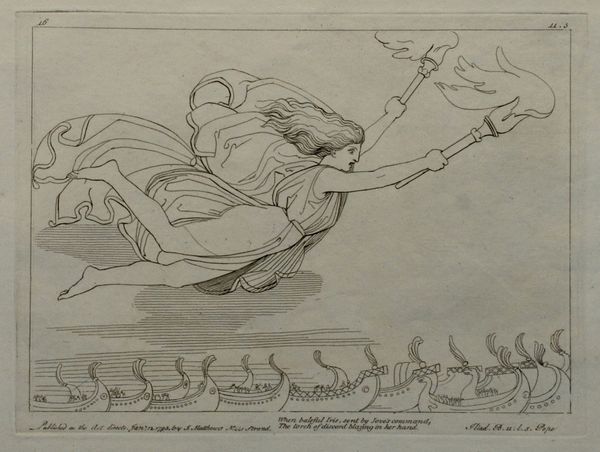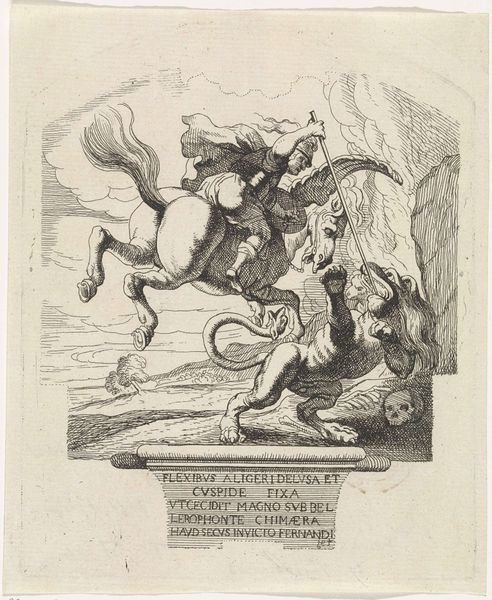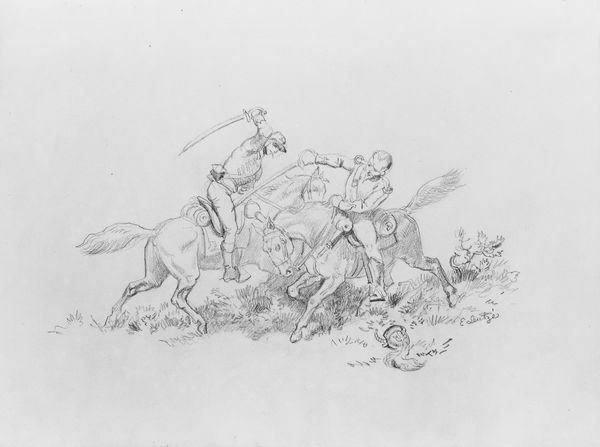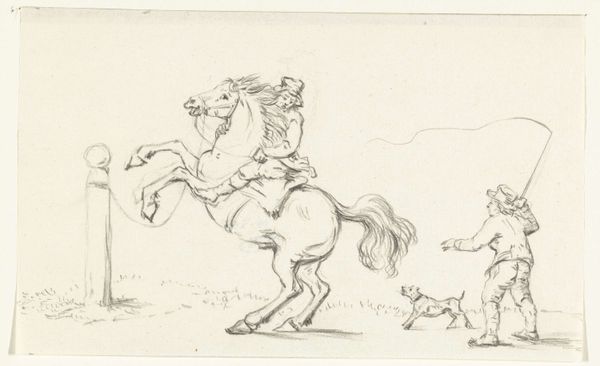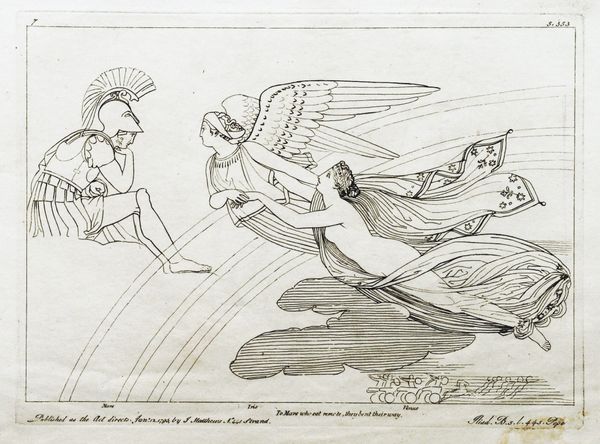
drawing, print, engraving
#
drawing
# print
#
landscape
#
figuration
#
romanesque
#
roman-mythology
#
line
#
engraving
Copyright: Public domain
Editor: We’re looking at “Neptune” by Giovanni Battista Piranesi. It's an engraving or print. The line work is so intricate; it reminds me of an architectural rendering, even though it's a mythological scene. What structural elements stand out to you? Curator: The most striking aspect is undoubtedly the organization of the pictorial space. The composition hinges on the dynamic interplay of line. Note how the artist deploys line to delineate form. The forceful lines composing Neptune contrast with the curvilinear rendering of his entourage. Editor: It’s true; there’s so much contrast between straight and curved lines, from Neptune's trident to the horses' manes. What is the effect of these variations in the engraving process? Curator: Consider how Piranesi utilizes cross-hatching to generate tonal variation. He coaxes depth from a fundamentally two-dimensional plane. Semiotically, the straight lines may signify order and control–traits we might ascribe to a god like Neptune–while the curves suggest fluidity, evocative of his domain over the seas. How does this reading resonate with your initial reaction? Editor: I see that. I initially focused on the scene’s liveliness, but seeing it through this formal lens reveals a calculated structure underneath the seemingly dynamic surface. So, do you think this calculated juxtaposition is the intention, to portray chaos within the system? Curator: The superimposition invites inquiry. It positions us as active interpreters of meaning rather than passive observers of mere illustration. Through this close looking, do you see any alternative structural underpinnings emerging? Editor: Thinking about it, the whole image feels like a balance of opposing forms; like Neptune's dominance over his chaotic environment, or control vs freedom. Curator: Precisely. Piranesi, through this meticulous rendering, constructs not just an image, but a discourse. Editor: Thank you. I learned to look at prints not only for their themes, but also how the form drives meaning, which is useful for interpreting different artworks.
Comments
No comments
Be the first to comment and join the conversation on the ultimate creative platform.
